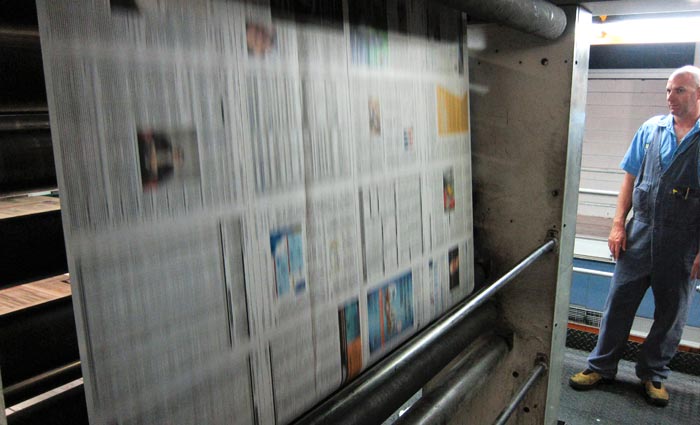
The regional print centres will take the workload from Chullora and Tullamarine, which are both due to close by June 2014.
The printing of the Sydney Morning Herald, The Age and the Australian Financial Review will be sent to North Richmond and Ballarat.
Both sites already have Manroland Uniset presses. North Richmond will receive four Geoman printing towers and one folder from Tullamarine. One of the Geomans will be combined into the Uniset for greater pagination capabilities.
Ballarat will receive a new dryer, chill roller, turning bar unit and a folder with superstructure for the production of newspapers and commercial products.
The site's Manroland Uniset will be given an additional tower and a new reel splicer. Ballarat will also pick up a Geoman tower from Chullora, which will be converted to print heatset products.
The heatset web will have the capability to be run in to one of the Uniset folders for mixed heatset and coldset production and vice versa. The Uniset coldset webs will run in to the Geoman heatset folder for similar products.
[Feature: Behind the scenes at Chullora]
Manroland Australasia managing director Steve Dunwell said: "It is a great task to assist one of our key accounts in reducing its newspaper production costs and at the same time upgrade quality and performance of its equipment."
Fairfax is also upgrading the Beresfield and Canberra print centres, while a new centre is being built in Auckland to replace the decommissioned Waikato site, according to an article published by trade association The Newspaper Works (TNW).
The upgrades and machinery transfers are expected to cost $42 million and provide annualised savings of $42 million, Fairfax's printing and distribution chief executive, Bob Lockley, told TNW.
"We are going to be a digital company, or heading in that direction, but that’s not going to happen in 12 months. That could take five, eight or 10 years."
Meanwhile, Fairfax today announced further restructuring to prepare for a "predominantly digital future".
"Over the past two years, the company has moved its organisational focus from print to digital, with more than two-thirds of Fairfax’s audience now accessing our journalism by digital means," said today's announcement.
"The next phase of Fairfax’s transformation involves simplifying the organisational structure to optimise opportunities that a predominantly digital future provides.
"The two central elements of the new structure are the consolidation of the Australian publishing businesses to drive revenues and efficiencies, and unlocking the potential of our digital businesses."
The Australian Publishing Media division will draw upon company-wide production functions in printing, distribution, advertising and editorial.
[LinkedIn: Was Murdoch right to say newspapers are dying?]
Comment below to have your say on this story.
If you have a news story or tip-off, get in touch at editorial@sprinter.com.au.
Sign up to the Sprinter newsletter
